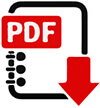

Product | Article | Description | Dia Range | |
 | D840 | Multilayer ultra mICRO Drill | 0.050 – 0.090 mm | |
 | D840 | Multilayer Super mICRO Drill | 0.100 – 0.190 mm | |
 | D840 | Multilayer Drill | 0.20 – 1.15 mm | |
 | D835 | mICRO Drill | 0.20 – 0.65 mm | |
 | D835 | Standard Drill | 0.70 – 3.175 mm | |
 | D620 | Multilayer Undercut Drill | 0.15 – 0.65 mm | |
 | D635 | Undercut Drill | 0.20 – 3.00 mm | |
 | D546 | Slot Drill | 0.30 – 3.175 mm | |
 | D835 / D534 / D532 | Inverse Drill | 3.20 – 7.50 mm | |
On request:Inch sizes / Special dimensions
Troubleshooting
Hole Registration Accuracy
Hole registration accuracy is measured by an AOI machine. As shown below, hole positional accuracy is affected by some causes, therefore by countermeasure these defects we can get better accuracy results.

Roughness of Hole Wall
The below pictures shows some very rough holes caused by drilling. This defect should be controlled to get the desired quality requirements.

Swarf Clogging
Poor swarf evacuation results in swarf deposit in the drilled hole and any space between the PWB and entry board.

Resin Smearing / Wicking
Resin is melted by heat of drilling and attaches to inner and copper layer. It prevents connection with the copper.

Drill Bit Breakage
Drill breakage is of two types:
- Deflected breakage.
Radial force tends to break the drill at the end of flute. - Twisted breakage
Large torque tends to break the drill at the middle of flute




